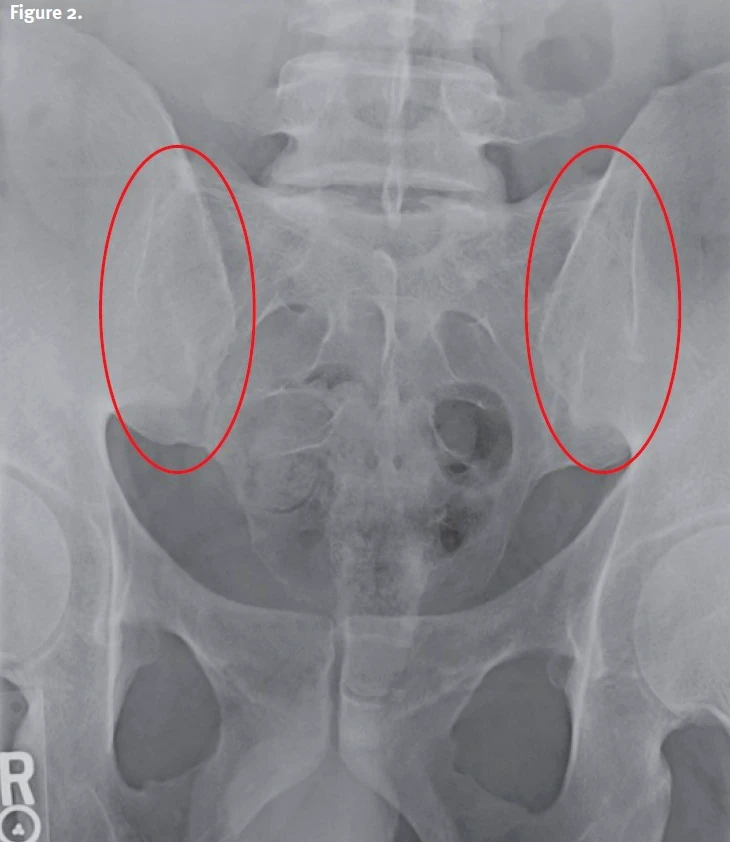Published on
Differential Diagnosis
- Vertebral compression fracture
- Pubic rami fracture
- Fused sacroiliac joints
- Tailbone (coccyx) fracture

Diagnosis
The correct diagnosis is fused sacroiliac joints. On the image above, there is no joint space present in either the left or right sacroiliac joints. This is a chronic condition that results from prolonged inflammation of the sacroiliac joints (sacroiliitis). Common causes for bilateral symmetric sacroiliac joint fusion include: ankylosing spondylitis, inflammatory bowel disease (eg, Crohn’s disease, ulcerative colitis), osteitis condensans ilii, osteoarthritis, Reiter’s symdrome/reactive disease, and rheumatoid arthritis (adult).
What to Look For
- Morning stiffness and pain with symptoms improved during exercise but not rest
- Pain and tenderness overlying the sacroiliac joint regions of the lower back
- Limited range of motion of the lower back
Pearls for Urgent Care Management
- Treatment with nonsteroidal anti-inflammatory medications is first line
- Referral to a rheumatologist for further evaluation of the underlying cause is warranted
Read More
- The Limping Child In The Urgent Care Center
- Back Pain, An Urgent Care Visit—And A Devastating Outcome
- 47-Year-Old With Left Hip Pain
- A 55-Year-Old Female With Hip Pain
- A 40-Year-Old With Back Pain After A Fall
Click Here to download the article PDF.
38-Year-Old With Pelvic Pain After a Fall
1 2
